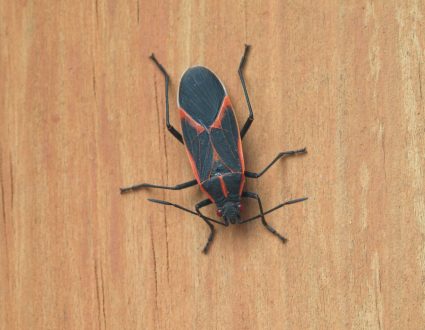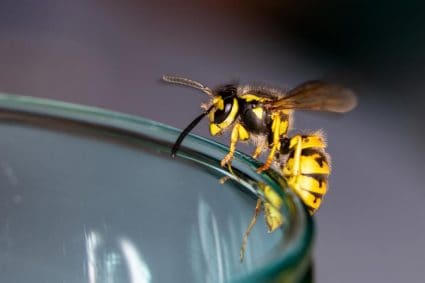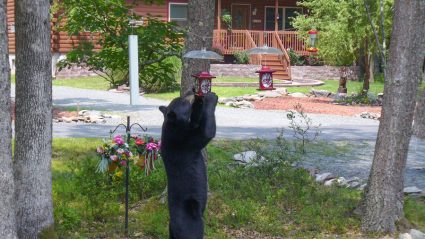
Skunks are highly adaptable creatures that can thrive in a variety of habitats, including suburban areas. This article will take an in-depth look at where skunks live in the suburbs, the signs of their presence, their interactions with humans and other animals, the risks they pose, and measures homeowners can take to discourage them from settling on their property.
Skunks in suburban areas often live in close proximity to humans due to the abundance of food and water. They typically make their homes in dens they dig themselves or in abandoned dens of other animals. These dens can be found in holes in yards, hollow logs, woodpiles, or brush piles. Skunks are also known to inhabit cavities beneath sheds or porches, unused drains, and culverts.
Skunk Habitats in Suburban Areas
In suburban areas, skunks often live in close proximity to humans due to the abundance of food and water. They are known to live in dens that they dig with their strong front claws, or they may inhabit abandoned dens built by other animals such as foxes or woodchucks. These dens can often be found in holes in yards, hollow logs, woodpiles, or brush piles.
Skunks are likely to nest close to where there is food readily available. Their diet in suburban areas can include insects, grubs, fruit, eggs, human garbage, and sometimes even small vertebrates such as mice. They are also known to inhabit cavities beneath sheds or porches, unused drains, and culverts that provide cover and a dry area.
Signs of Skunks in Suburban Areas
If you suspect a skunk is living on your property, there are a few signs you can look for:
- Musky Odor: Skunks are known for their strong, musky odor. If you notice a persistent smell around your property, it could be a sign that a skunk has taken up residence.
- Excavated Soil: Freshly excavated soil next to a hole under a building or woodpile could indicate that a skunk has made a burrow there.
- Skunk Droppings: Skunk droppings look similar to those of a cat and are typically found in lawns and gardens.
- Damage to Lawn or Garden: Skunks are known to dig up lawns and gardens in search of food, particularly grubs and other insects.
- Sightings or Tracks: Seeing a skunk on your property, especially during the day, is an obvious sign of a skunk problem. Skunk tracks can also be a tell-tale sign of their presence.
Skunks’ Interaction with Humans and Other Animals
Skunks interact with humans and other animals in suburban environments in various ways. They are omnivores and eat a wide variety of food, including insects, mice, fruits, chicken eggs, and even pet food left outdoors. This often brings them into conflict with people. Skunks have a defensive behavior where they can spray a strong-smelling liquid from their anal glands when threatened or frightened. This smell is difficult to remove from skin, fur, or clothes.
Risks Associated with Skunks in the Suburbs
Skunks living in suburban areas can pose several risks to humans, pets, and property. These include health risks from diseases they carry like rabies, leptospirosis, listeriosis, and canine distemper, property damage from their burrowing and feeding habits, and the nuisance and odor from their musk-laden spray.
Discouraging Skunks from Settling in Your Property
There are several measures homeowners can take to discourage skunks from settling on their property. These include removing food attractants, limiting shelter options, installing fencing, using repellents, installing motion-activated lights and sprinklers, maintaining a clean yard, controlling the rodent population, and hiring a professional if necessary.
Conclusion
While skunks can pose several risks in suburban areas, these risks can be managed and mitigated with appropriate preventive measures and professional assistance when needed. By understanding where skunks live in the suburbs and taking steps to make your property less attractive to them, you can coexist peacefully with these creatures who play a beneficial role in our ecosystem.
Frequently Asked Questions
What time of the day are skunks most active?
Skunks are primarily nocturnal animals, meaning they are most active during the night. However, they can sometimes be seen during the day, especially in the spring when mothers are raising their young.
How far can a skunk spray?
A skunk can spray its musk up to a distance of approximately 10 feet. Accuracy, however, is more effective at shorter distances.
Are skunks aggressive?
Skunks are generally not aggressive and prefer to avoid confrontation. However, they will use their spray as a defensive mechanism if they feel threatened.
What is the gestation period for skunks?
The gestation period for skunks is typically around 60 to 75 days.
What should I do if my pet gets sprayed by a skunk?
If your pet gets sprayed by a skunk, it’s important to act quickly. There are commercial skunk odor removers available, or you can make a homemade solution of 1 quart of 3% hydrogen peroxide, 1/4 cup of baking soda, and 1 teaspoon of liquid soap. Be sure to avoid your pet’s eyes and rinse thoroughly.
How many babies can a skunk have at one time?
A skunk can give birth to a litter of 2 to 10 babies at one time, with the average being around 5 to 6.












